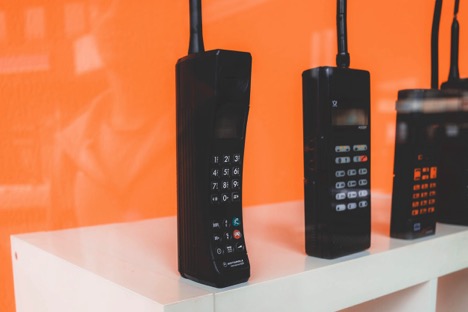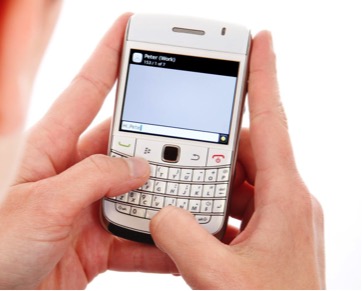Smartphones have become an era-defining gadget. They’ve reached a level where they’re virtually a necessity in the modern world. How did this device become the preeminent piece of tech in the 21st Century? Allow us to take you on a brief history lesson of smartphones through the years.
Humble beginnings
The rise of smartphones must, of course, begin with the rise of mobile phones. The first mobile phone call was made in 1973 by a Motorola engineer named Martin Cooper in New York City. The phone was 23cm long, 3cm deep, and weighed 1.1kg (they weren’t called ‘bricks’ for nothing!). The battery took 10 hours to charge fully and allowed only 30 minutes of talk time. They looked more like walkie-talkies than the mobiles of today.
It wasn’t until almost 20 years later that the first text message was sent. In December of 1992, engineer Neil Papworth sent an SMS that simply read “Merry Christmas”. Mobile phones still weren’t particularly popular or widespread due to their size, recharge times, cost, and limited network service. At the time, the average mobile phone cost over £1400 in 1992 which, adjusted for inflation, is the equivalent of over £2800 today!

A smartphone was born
Then, believe it or not, in 1994, the first device that we would come to regard as a smartphone was released. The IBM Simon Personal Computer revolutionised how we communicate on the move. It was a handheld touchscreen device and boasted a diverse portfolio of features. As well as working as a telephone, it was able to send and receive faxes and emails. It could also be installed with a range of applications that include a world clock, event organiser, calendar, address book, calculator and notepad. It was an innovative device and paved the way for smartphones of the future. Unfortunately, it was 20cm in length and its battery only lasted one hour before needing to be charged.
The heyday of brick phones
The next major milestone in the history of smartphones came in 1996 with the release of the Nokia 9000 Communicator – it was the first mobile phone with internet access. Surprisingly, it took a few years for mobile internet usage to take off, and even then the experience was almost unrecognisable when compared with today’s mobile internet experience. Nevertheless, this development gave us what is perhaps the most essential feature in a phone being ‘smart’ today – internet access. We may fondly snigger at the brick phones of days gone by, but these clunky devices helped to establish smartphones as a modern accessory for the masses. Unlike previous models, the Nokia 9000 Communicator and the other mobile phones of the day were truly handheld for the first time. This marked a huge step forward in becoming truly ‘mobile’.
Say cheese
Over a trillion photos are taken every year on mobile phones, and it’s almost impossible to imagine a contemporary phone that doesn’t have a camera. Photo taking and sharing apps have become some of the most lucrative companies of recent times (Instagram, Snapchat, Facebook) and cultural phenomena in their own right. Things would be very different if it weren’t for Japanese company Sharp having the bright idea to add a camera to their J-SH04 mobile phone in the year 2000. The phone was only available in Japan and its camera had just 0.11 megapixels, but the concept was a hit and we’ve never looked back.
Texting takes over
If we imagine the smartphone as a jigsaw puzzle being put together over time, by this point we have quite a few of the pieces – internet access, calendars and planners, notepads, cameras, and email. In 2003 we received another critical piece of the puzzle – the birth of instant messaging on mobile – BlackBerry Messenger (BBM). It was a huge success and took BlackBerry’s popularity to new heights. At its peak, BBM had over 150 million users, and it allowed them to communicate instantly over the internet. BlackBerry had long been seen as a business-only device, but BBM opened them up to new audiences of all ages, especially teenagers. Think of how useful iMessage and Whatsapp are – we have BBM to thank for them both.

Apple makes its move
Fast forward 4 years to 2007, where Steve Jobs announces what became not only one of the most significant pieces of technology in recent times but the archetype for smartphones forever: the iPhone. If you asked most people what the first smartphone was, they’d probably say the iPhone. The term iPhone is synonymous with smartphones and mobile tech, with Apple often being one step ahead of their competitors. It was a true revolution. The iPhone built upon all the features we’ve mentioned so far and packaged them in a sleek, elegant body for the first time. It was a smartphone that the masses could use thanks to its excellent operating system: iOS.
Apple’s big software competitor, Android, was launched by Google the following year in 2008 with the HTC Dream G1. 2008 also saw both Apple and Google launch their respective app stores. This started the great iOS vs Android competition that is still going strong today. Apple, with it’s astonishing iPhone and more extensive App Store took an early lead, but in a few years Android closed the gap and we continue to benefit from these two companies competing to make the best products possible.
The name’s phone, smartphone
With smartphones becoming so useful in many aspects of our lives, it meant that they held a great deal of information about us. The big problem with this was security and keeping your personal details safe. 4-digit pin codes were fine when all we had were some text messages and a to-do list, but now that people were using their phones for shopping, dating, banking, and taking family photos, security needed to step up.
Phone manufacturers made a move that seemed straight out of a James Bond movie and looked to biometrics. In 2013, Apple launched Touch ID, a fingerprint scanner, on the iPhone 5S. This allowed users to lock and unlock their phones using their fingerprint. An elegant improvement on having to remember pin codes. Now, people could access their phone and even authorise payments simply but scanning their fingerprint. Some manufacturers have developed this even further by including face-unlocking technology, most famously, but by no means first, by Apple with their Face ID technology on the iPhone X in 2017.
This brings us to the present day. We’ve covered each piece of the smartphone puzzle, from the very first mobile phone call, through to camera phones and internet access, right up to Face ID. Now, there are over 2.71 billion smartphone users around the world and that number is expected to keep growing. The rise of smartphones has been fairly sudden, and it’s far from over. Here at Slyk, we’re very excited to see what the future holds.
If you’re reading this, chances are you own a smartphone. Why not make the most of it by using a Slyk phone stand for your home or office? Our products provide the most comfortable user experience for your smartphone, whether at a desk, on the sofa, or even laying in bed. Browse our range of phone and tablet stands today.
